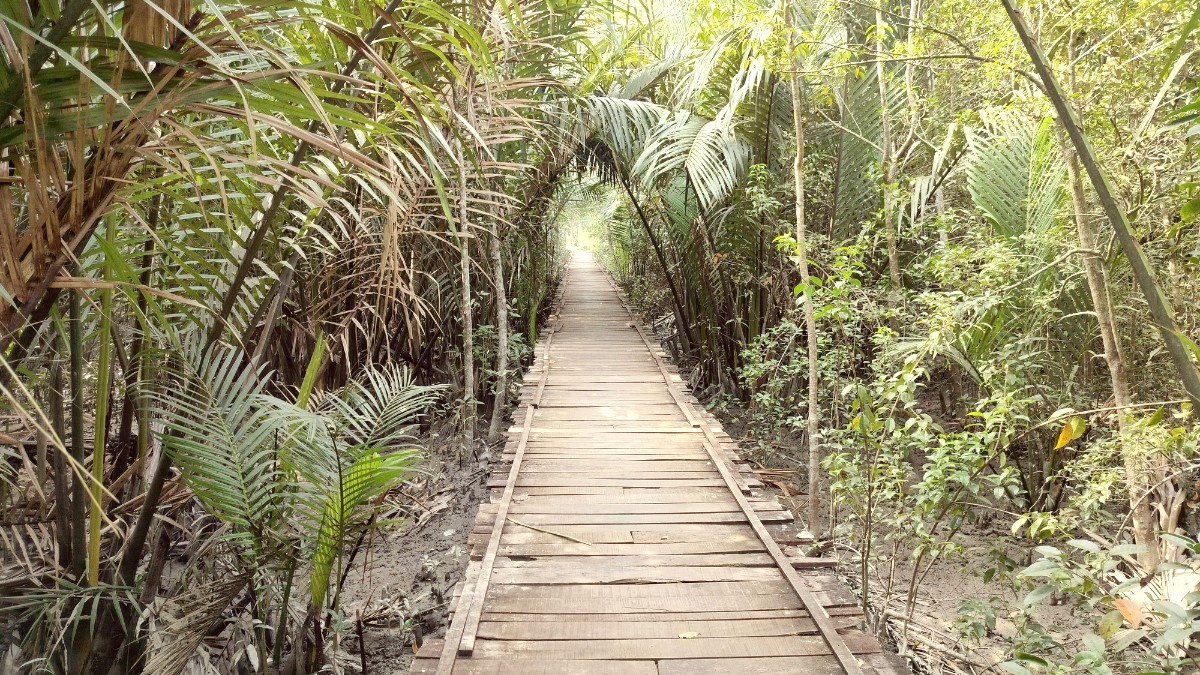
Bangladesh
Bangladesh experiences three main seasons: winter, summer, and monsoon. Each season presents a different experience of the Sundarbans, with varying temperatures, precipitation levels, and humidity.
Consider special weather concerns for the Sundarbans. Monsoons bring continuous heavy rainfall from June to October. Cyclones pose a serious risk, especially during the pre-monsoon (April-May) and post-monsoon (October-November) periods. Monitor weather forecasts closely if traveling during these months.
Pack a light, waterproof jacket or Poncho if you plan to visit during the monsoon season.
Unexpected rain showers can occur even outside the peak monsoon months, so a compact rain shell is always an useful item to have in your bag.
Peak tourism period
Cooler, drier weather; better wildlife spotting (less dense vegetation); pleasant boat rides; lower cyclone risk; migratory birds present; clear skies for photography.
Higher demand for tours and accommodations; popular spots can feel crowded; prices for tours may be at their highest.
Transition period
Fewer crowds compared to high season; more tranquil experience; wildlife remains active; prices might be slightly lower than peak winter.
Temperatures start rising significantly; daytime activities can be uncomfortable; increasing risk of pre-monsoon storms.
Monsoon period
Significantly fewer tourists, giving a truly secluded experience; provides a different, raw experience of the Sundarbans.
Heavy rainfall can disrupt travel; challenging boat navigation; difficult wildlife viewing due to dense foliage; highest cyclone risk; some tour operators may run limited trips.
The local currency is the Bangladeshi Taka (BDT), symbolized by ৳. As of late 2023/early 2024, the approximate exchange rate is 1 USD ≈ 110 BDT. Exchange currency at major banks, authorized money changers, and airports. ATMs are scarce in remote areas like the Sundarbans. Cash is important for your Sundarbans tour and local purchases.
A detailed cost breakdown for different travel styles. Consider price ranges for accommodations, meals, transportation, and attraction fees. Carry a sufficient amount of BDT, especially small denominations, for ease of transactions and tipping.
Basic guesthouses, local food, shared rickshaws, shared boat tours.
Mid-range hotels, diverse local cuisine, AC buses, private cabin options on boats.
High-end hotels, fine dining, private transfers, exclusive boat rentals.
BDT 18,000 - 35,000+ (USD 165 - 320+) per person for a shared cabin, depending on operator.
For multi-day Sundarbans tour, a collective tip for crew and guides of BDT 500-1000 (USD 5-9) per person per day is common.
Most foreign nationals need a visa to enter Bangladesh. Different visa types exist, including Tourist, Business, and Transit Visas. For tourism, the Tourist Visa is most relevant. The application process typically involves submitting an online application through the Bangladesh Embassy or High Commission website in your country of residence.
You complete the online form electronically, print it, and submit it with required documents to the embassy. This approach makes for visa processing before you travel, giving certainty.
Some nationalities may qualify for a Visa on Arrival (VOA) for tourism (15-30 days). Eligibility criteria and fees differ by nationality. Verify VOA eligibility with the nearest Bangladesh embassy or consulate before travel.
Access to healthcare and emergency services is limited in the Sundarbans. Larger tour boats typically have basic first aid supplies. For serious medical emergencies, evacuation to Khulna or Dhaka might be necessary.